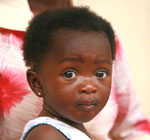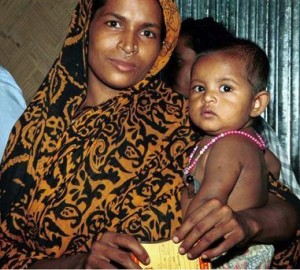
USAID's Infant & Young Child Nutrition Project
Bangladesh
 Although Bangladesh has made considerable strides in improving health and nutrition in the last several decades, nearly half of the children in the country are still stunted or wasted, and Bangladesh has the second highest number of underweight children in the world. In addition, 68 percent of Bangladeshi infants and children 6–59 months of age are anemic, with the highest prevalence among children 6–23 months of age.1
Although Bangladesh has made considerable strides in improving health and nutrition in the last several decades, nearly half of the children in the country are still stunted or wasted, and Bangladesh has the second highest number of underweight children in the world. In addition, 68 percent of Bangladeshi infants and children 6–59 months of age are anemic, with the highest prevalence among children 6–23 months of age.1
The US Agency for International Development’s (USAID) Infant & Young Child Nutrition (IYCN) Project worked with CARE’s Window of Opportunity Program to provide more than 55,000 young children in the Karimganj district with vital micronutrient powders. The powders can be mixed with home-prepared foods to prevent anemia and improve nutrition or feeding practices.
Highlights
- IYCN designed a strategy to test innovative approaches for including micronutrient powders in a broader effort to improve complementary food preparation. The project used the powders to promote improved feeding behaviors—such as making sure that children get more nutrient-dense meals—to achieve long-term health improvements.
- The project created communications materials to assist community health workers in promoting the use of micronutrient powders.
Learn more
1. World Health Organization Regional Office for South-East Asia. Country Health System Profile: Bangladesh. 2007.
Photo: M.Dorgabekova

